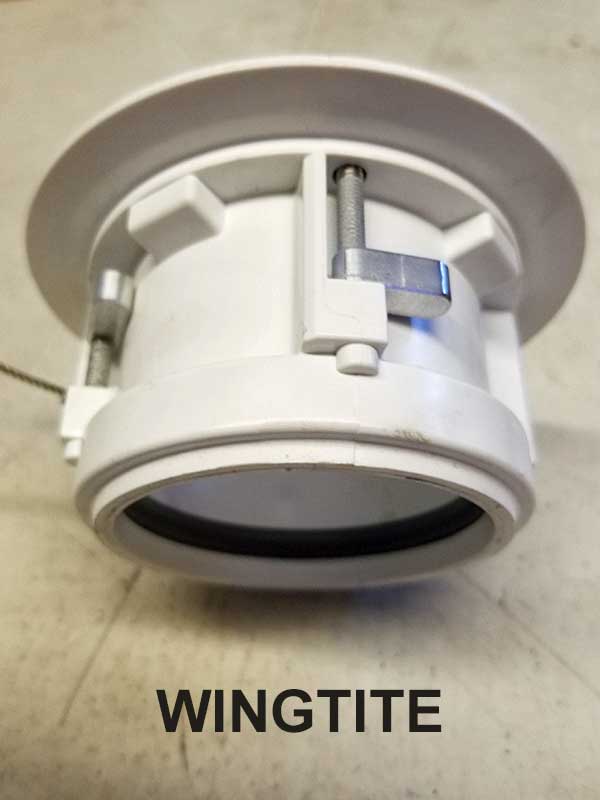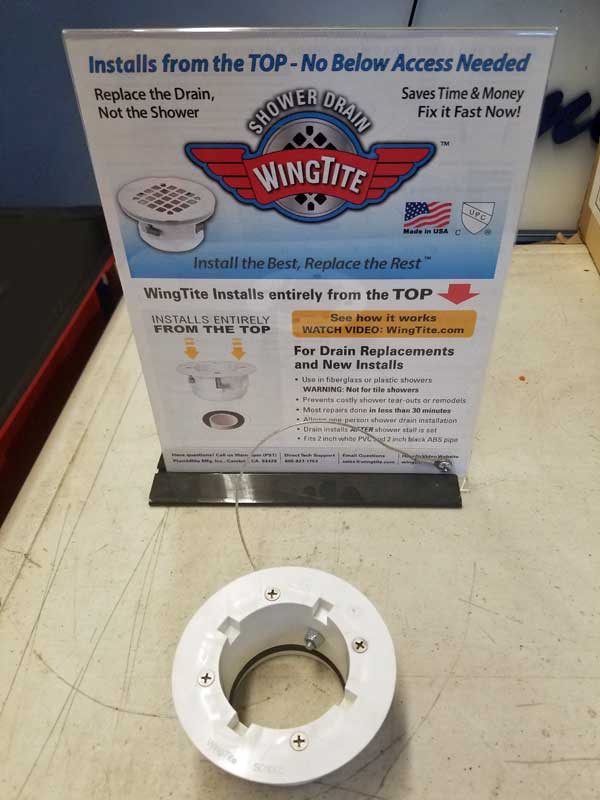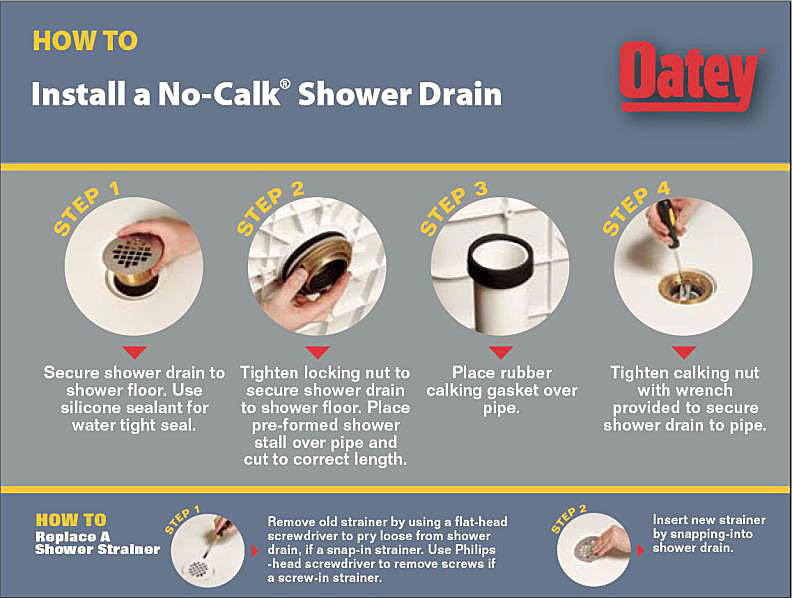Ryan_Z71
New Member
My brother has a 3 year-old manufactured home that was set atop a rather nice poured wall basement (10-foot height even). The Master Bath has a 48" walk-in shower stall whose drain was leaking into the basement. The problem is that the shower P-trap sits right on one of the main steel girders and there's only 10" of clearance between the beam flange and the foundation wall on one side, and to the other is the HVAC plenum and return ducts so it just can't be reached with any kind of tool and barely with a blind arm. The original drain from the manufacturer was an ABS no-caulk Oatey piece. Basically, we think the ABS body was overstressed during tightening of that accordian gasket and just gave way.
My brother tried to replace the drain with a Wingtite replacement assembly, but there wasn't clearance for the wings to expand. THANKFULLY, the shower stall was a 3-piece unit and easily freed after RotoZipping back some of the drywall to expose the nailing lip and removing the screws. So the pan is up and we can get a new drain assembly in-place and cranked down before we set it back down. I was thinking that a brass no-caulk drain is our only choice here. I only worked with one of these once before in my life, and it was a problem. I think it was really problematice because the drain pipe was not perfectly vertical and angled into the drain assembly so the accordian gasket didn't sit as intended by design. I ended up having to caulk it with a liberal amount of aquarium-grade silicone to stop the leak. So, obviously I'm a little hesitant and researching our options. The pipe in this case is almost perfectly vertical, and I would caulk the no-caulk just to feel more secure unless there is a better option.
So, with the knowledge and experience here, is there a better option out there for a shower drain for a prefabricated fiberglass base with no below access? I was looking at an Oatey "Receptor Base" drain assembly which seems to suggest the base can be solvent welded to the pipe, the pan set, and then the top of the drain screwed in from above, but I don't see how that seals the drain well to the shower base???
My sister-in-law is already ready to kill us both from the drywall dust and void where the shower once was, so we need to button this project up quickly so we can trim out the surround to hide the scarred drywall and flange and bring the shower back into service without leaking. I would most greatly appreciate any insight - I did search the archives too.
My brother tried to replace the drain with a Wingtite replacement assembly, but there wasn't clearance for the wings to expand. THANKFULLY, the shower stall was a 3-piece unit and easily freed after RotoZipping back some of the drywall to expose the nailing lip and removing the screws. So the pan is up and we can get a new drain assembly in-place and cranked down before we set it back down. I was thinking that a brass no-caulk drain is our only choice here. I only worked with one of these once before in my life, and it was a problem. I think it was really problematice because the drain pipe was not perfectly vertical and angled into the drain assembly so the accordian gasket didn't sit as intended by design. I ended up having to caulk it with a liberal amount of aquarium-grade silicone to stop the leak. So, obviously I'm a little hesitant and researching our options. The pipe in this case is almost perfectly vertical, and I would caulk the no-caulk just to feel more secure unless there is a better option.
So, with the knowledge and experience here, is there a better option out there for a shower drain for a prefabricated fiberglass base with no below access? I was looking at an Oatey "Receptor Base" drain assembly which seems to suggest the base can be solvent welded to the pipe, the pan set, and then the top of the drain screwed in from above, but I don't see how that seals the drain well to the shower base???
My sister-in-law is already ready to kill us both from the drywall dust and void where the shower once was, so we need to button this project up quickly so we can trim out the surround to hide the scarred drywall and flange and bring the shower back into service without leaking. I would most greatly appreciate any insight - I did search the archives too.



